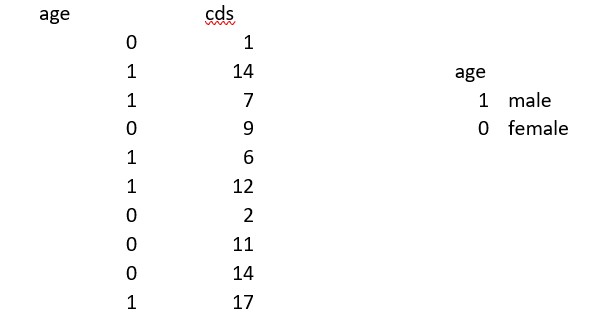Question
From a study of children between the ages of 10 and 14 living in Gaza during the Al-Aqsa Intifada in 2006.In order to be included
From a study of children between the ages of 10 and 14 living in Gaza during the Al-Aqsa Intifada in 2006.In order to be included in the study, a child must have experienced at least one traumatic event during the Intifada (such as shelling of home, being shot, losing family, witnessing killings).A variety of standardized tests were administered to the kids, including the number of traumatic events experienced (TRAUMA), symptoms of Posttraumatic Stress Disorder as measured by the Child Posttraumatic Stress Reaction Index (PTSD), and depression as measured by the Childhood Depression Scale (CDS).All variables are scaled such that higher scores reflect more (more traumatic events, more PTSD symptoms, more depression symptoms).
NOTE: It is next to impossible to formally randomly sample a population of childrenliving in a war zone whohave experienced a trauma as "randomly sample" is usually defined.As will be discussed in class, this does not present a problem for inference, although it changes the nature of the inference one can make.For the purpose of answering this question, treat this as if it were a random sample of kids from this population.
B) Test where there is a difference between boys and girls who experienced trauma in whether they are at risk of a major depressive episode.A child is considered at risk of a major depression episode who scores higher than 10 on the CDS.
i.Clearlyarticulate your null and alternative hypotheses in symbolic form,
(i)Provide your obtained result, test statistic (such as t or Z or ?2), degrees offreedom (if relevant), and p-value.
(ii)Do you reject the null hypothesis or do you fail to reject it?
(iii)Substantively interpret the result in no more than two sentences.Include your descriptive as well as inferential statistics pertinent to your substantive interpretation. Avoid the use of the terms "null hypothesis" and "alternative hypothesis" in your interpretation.

Step by Step Solution
There are 3 Steps involved in it
Step: 1

Get Instant Access to Expert-Tailored Solutions
See step-by-step solutions with expert insights and AI powered tools for academic success
Step: 2

Step: 3

Ace Your Homework with AI
Get the answers you need in no time with our AI-driven, step-by-step assistance
Get Started


